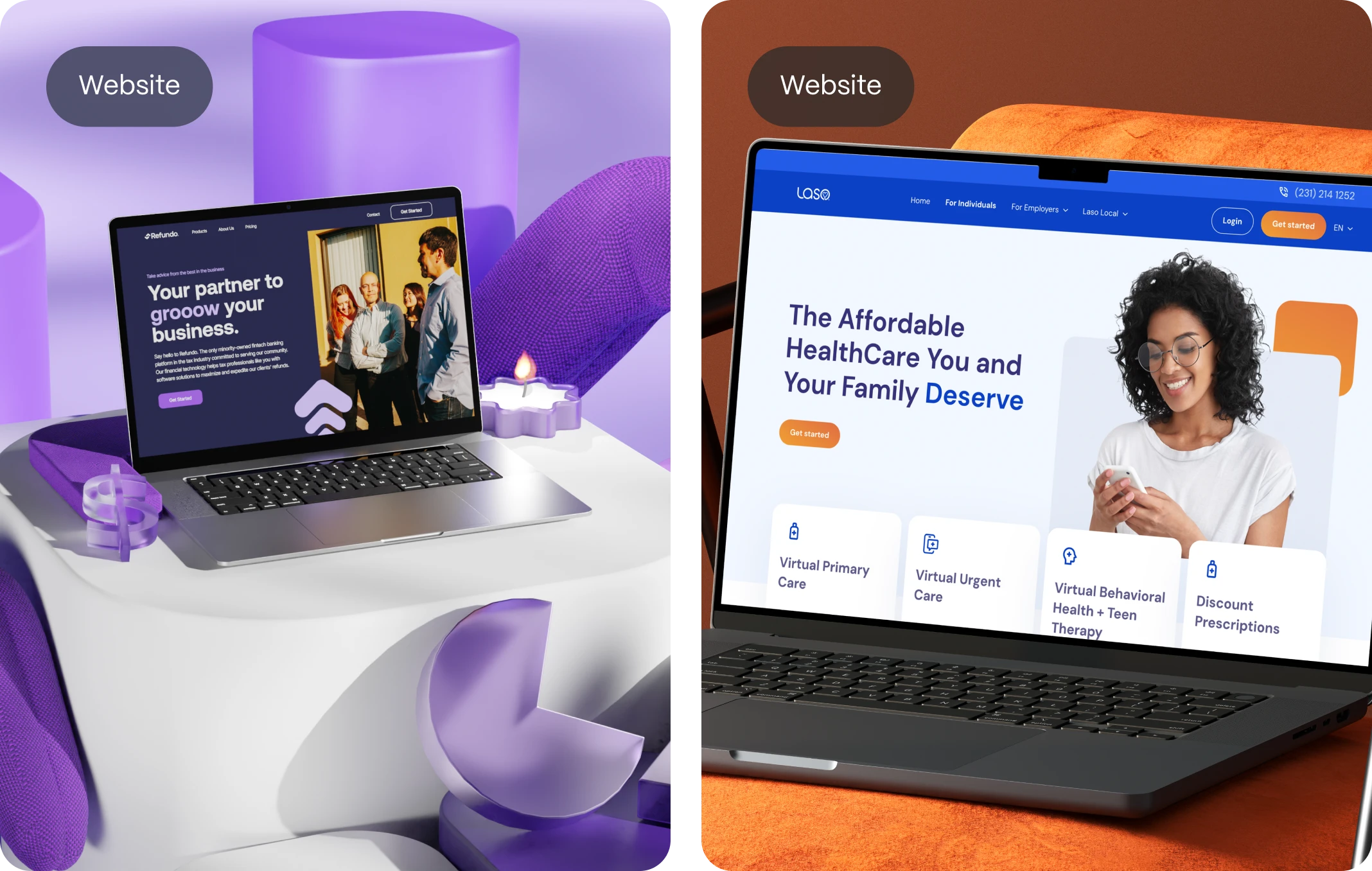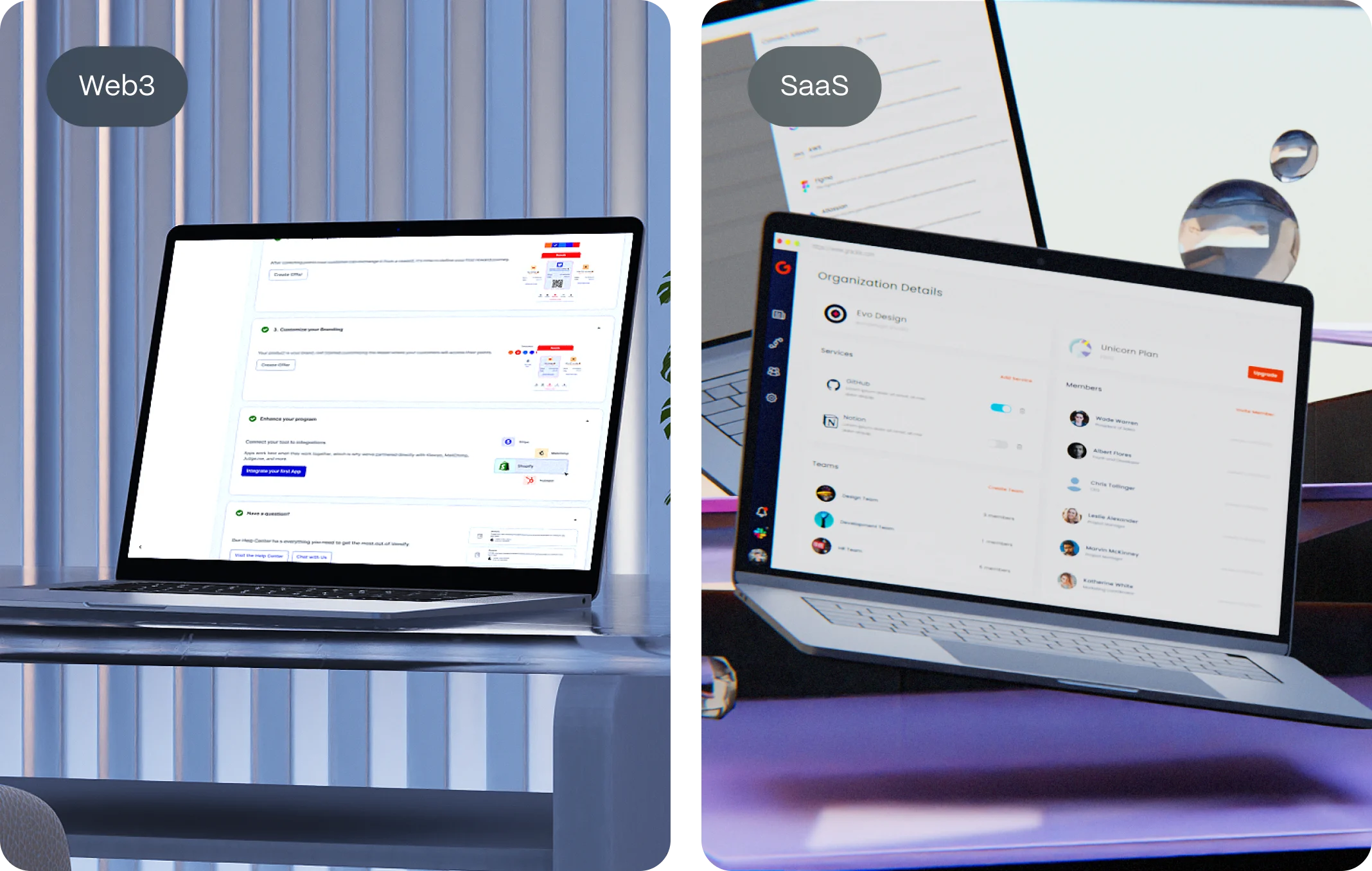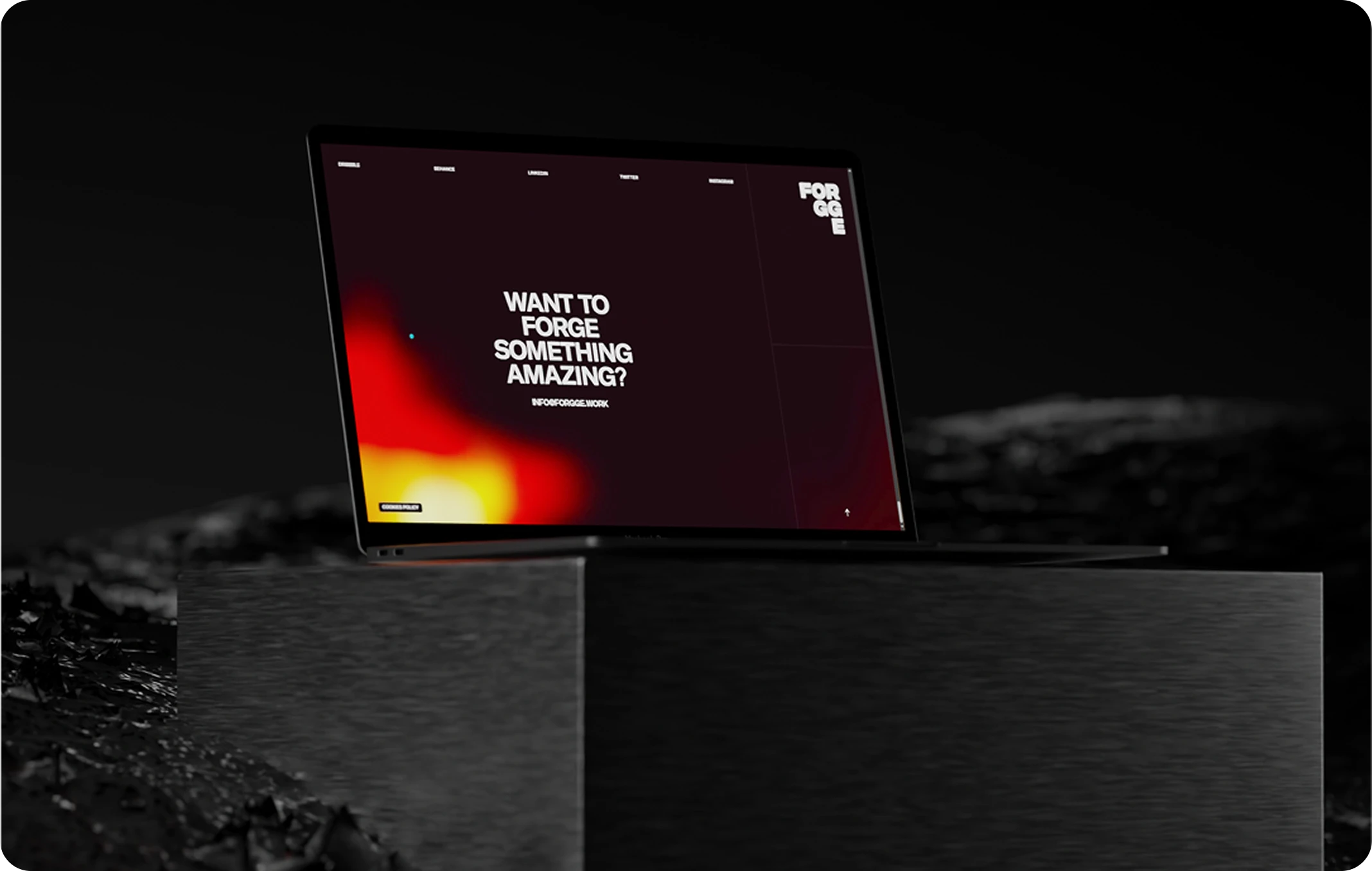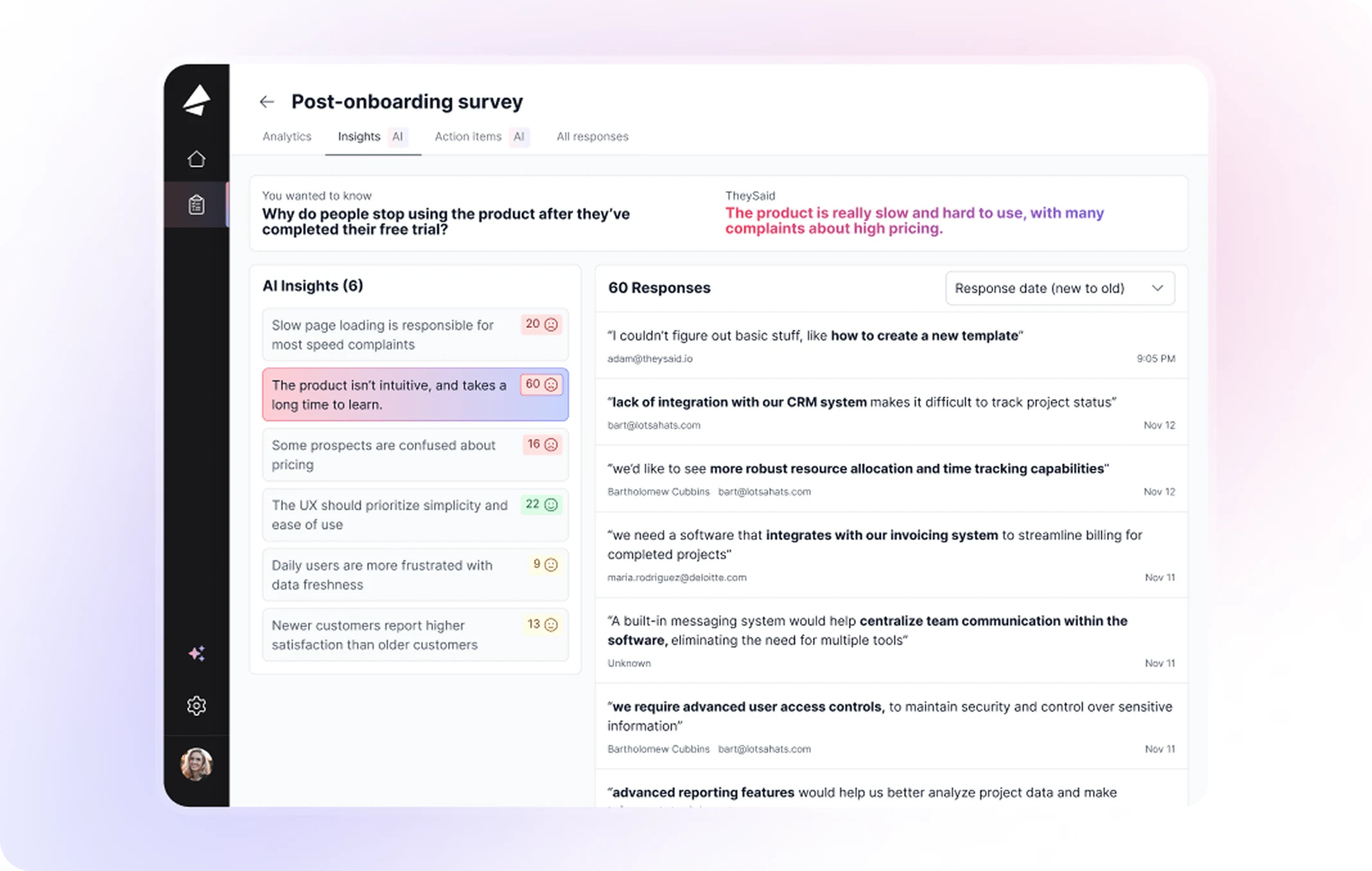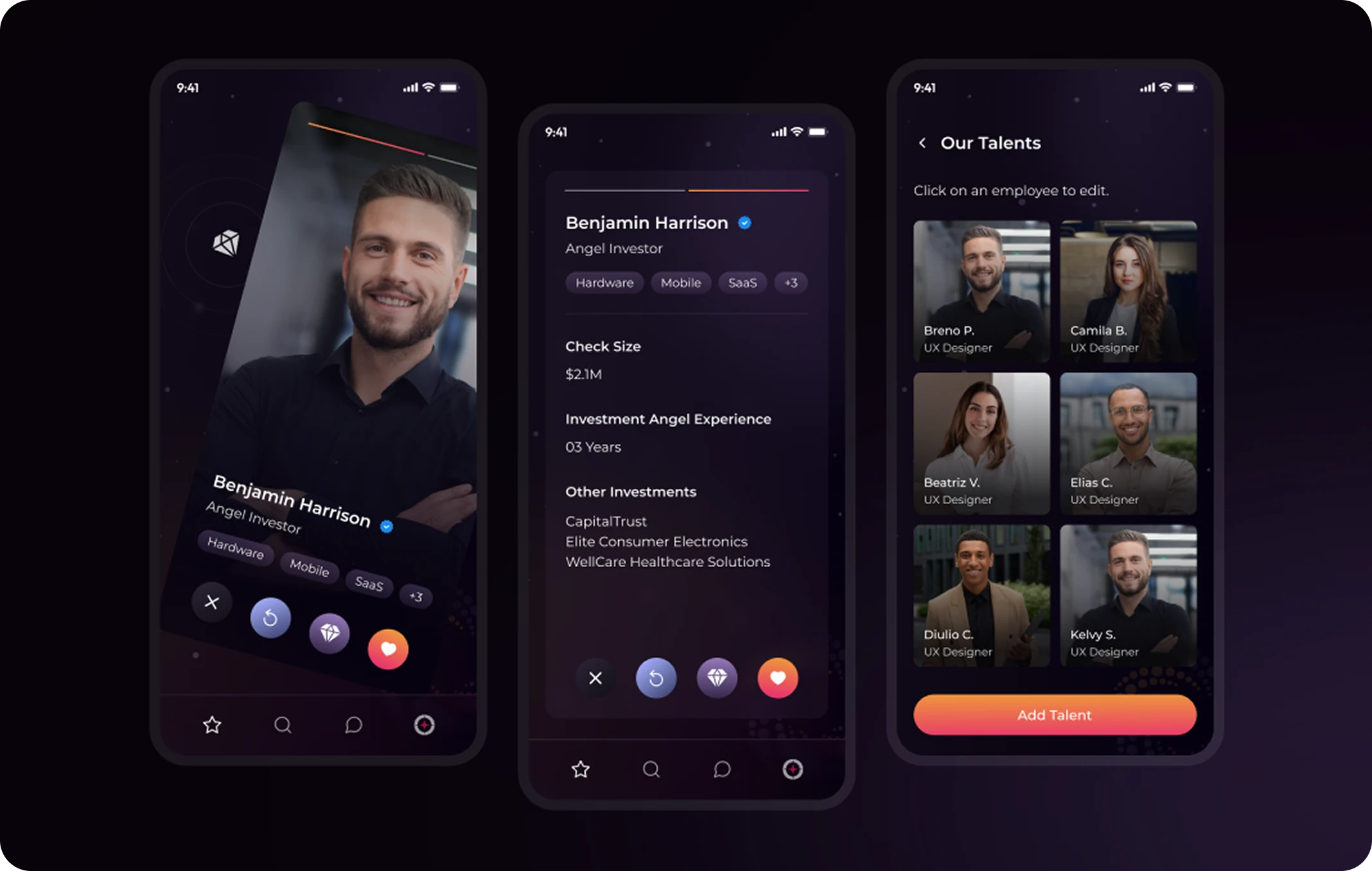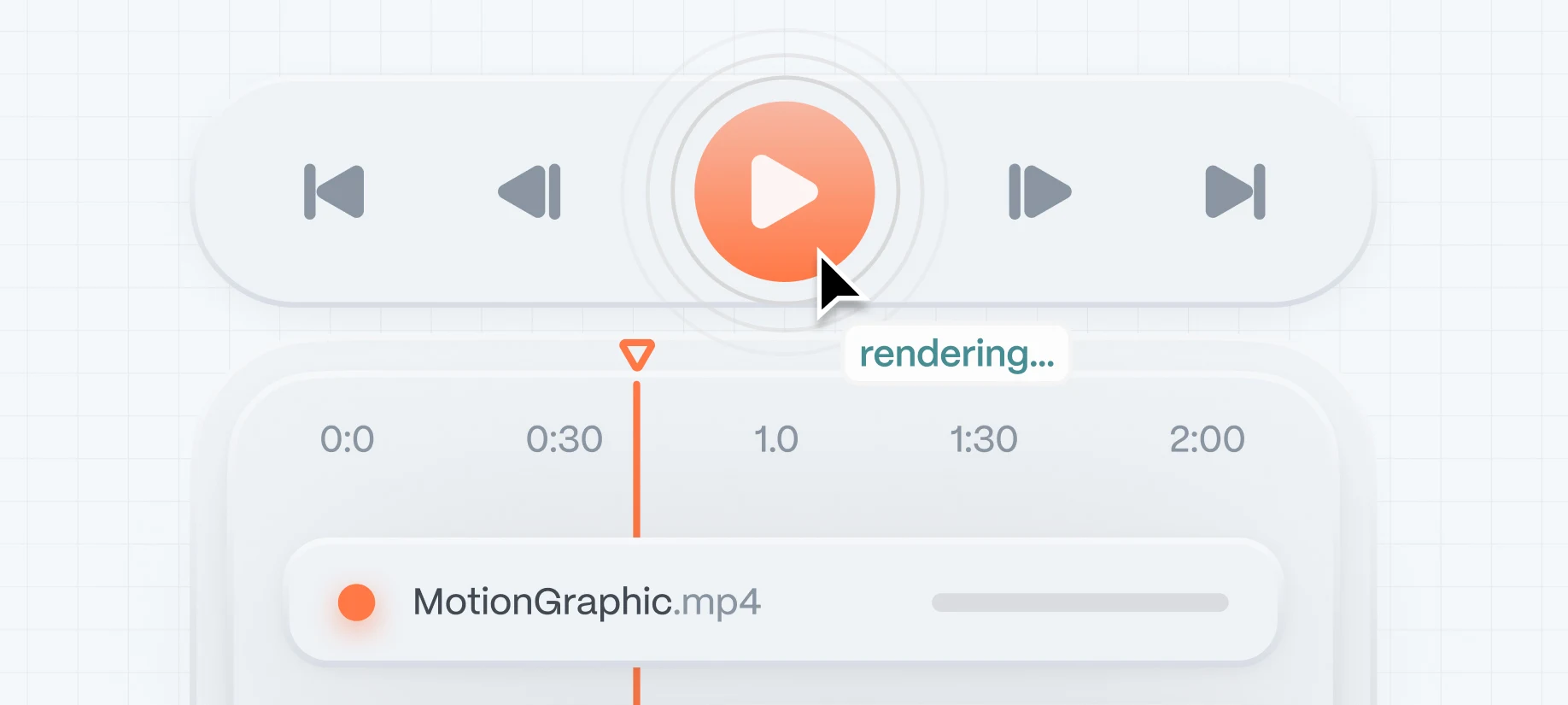If you’re building a startup in 2025, you’re not just selling a product — you’re selling an experience. One that’s not only functional but memorable. One that resonates emotionally, engages quickly, and leaves a lasting impression. That’s where motion graphics come in.
In today’s hyper-competitive digital environment, your product has a few seconds — if that — to hook a user. Static interfaces can no longer compete with fluid, immersive experiences. Motion graphics aren’t just visual flourishes anymore. They’re a language, a rhythm, a persuasive layer that bridges intention and action, guiding users intuitively through your product while shaping your brand’s personality.
Yet, many startups either underestimate motion design or treat it as a cosmetic layer. That’s a mistake. Done right, motion graphics help reduce cognitive friction, increase conversion, reinforce trust, and breathe life into your brand. This guide exists to change how you think about motion design: not as decoration, but as strategy.
Let’s dive in.
What Are Motion Graphics, Really?
Motion graphics refer to animated visual elements — typically involving text, shapes, icons, or illustrations — used in digital media to communicate ideas, clarify actions, or build atmosphere. Unlike full character animation or cinematic VFX, motion graphics often focus on interface enhancements, explainer videos, brand storytelling, and transitions within apps or websites.
Key Characteristics:
- Based on graphic design principles
- Emphasizes timing, rhythm, and movement
- Enhances communication and narrative flow
- Often used in UI animations, onboarding sequences, product launches, and pitch decks
Austin Shaw, in Design for Motion, notes: “Motion design isn’t about making things move. It’s about making movement meaningful.”

Why Startups Should Care About Motion Graphics
Founders are always optimizing — for speed, user acquisition, and funding. Motion graphics might seem like a “nice-to-have,” but the best-performing startups know that how something feels can be just as important as what it does.
Here’s why motion design is mission-critical for startups:
First Impressions Matter
In an app store, on a website, or during a product demo, a few frames of well-timed motion can:
- Guide the user’s eye
- Signal responsiveness and quality
- Convey innovation and polish
Improved Onboarding & Retention
Animated walkthroughs, tooltips, and interactions reduce learning curves. This helps:
- Increase feature adoption
- Reduce support tickets
- Boost retention rates (a key metric for investors)
Storytelling That Converts
Motion design can turn your vision into a compelling narrative. Think of how Dropbox or Slack’s early explainer videos turned abstract services into household names.
Enhanced User Experience
As Brian Stone and Leah Wahlin outline in The Theory and Practice of Motion Design, motion can:
- Communicate hierarchy and flow
- Provide feedback loops
- Reduce user errors and hesitation
In other words, motion makes your UX smarter. For more on this, see our article on accessibility in UX design.
Core Principles of Motion Design
To use motion effectively, you need to go beyond animation tools and understand the principles behind compelling movement. These include:
1. Timing & Spacing
Inspired by Disney’s 12 principles of animation, timing defines how long an action takes. Fast = urgency. Slow = elegance. Smart timing makes your product feel alive.
2. Easing
Rather than linear motion, natural easing makes animations feel organic — like gravity and momentum exist in your digital space. For example: buttons should “bounce” slightly when tapped, providing tactile feedback.
3. Anticipation & Follow Through
Small movements before and after main actions (like a bounce before a pop) give animations personality and help users predict outcomes.
4. Continuity
Avoid jarring, disconnected movements. Transition scenes and interface elements with consistent rhythm, scale, and direction.
5. Hierarchy
Motion directs attention. It tells users: “Look here next.” Use it to prioritize information flow — but never overload the user.
To understand more about the role of design in startups, check out how UX/UI design drives business growth.
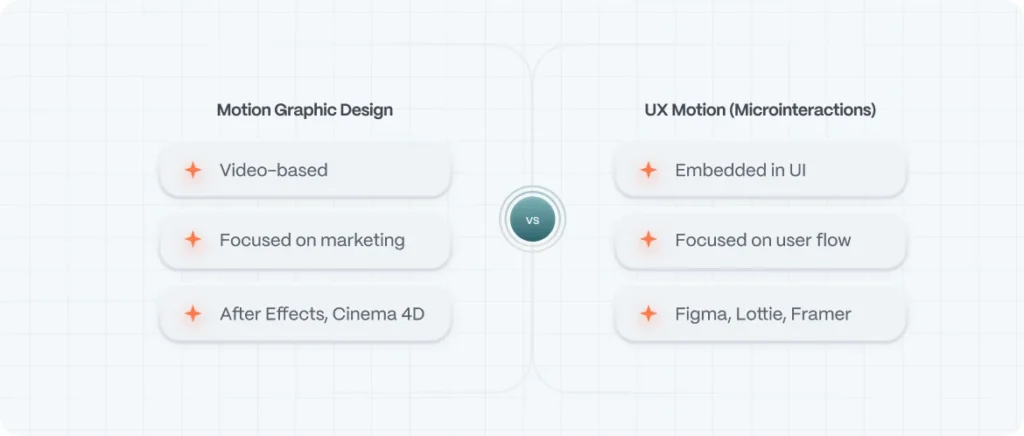
Motion Graphic Design vs. UX Animation: What’s the Difference?
While often used interchangeably, there’s a subtle — yet vital — distinction.
Motion Graphic Design
Usually video-based (explainer videos, ads, reels)
Focused on brand storytelling and marketing
Requires tools like After Effects, Cinema 4D
UX Motion (Microinteractions)
Embedded in UI (hover effects, transitions, feedback)
Focused on user flow and functionality
Often designed in Figma, Lottie, Framer
Pro Tip: Startups should combine both. Use motion graphics to communicate vision, and UX animation to deliver on it.
Best Tools for Modern Motion Design
Modern motion design doesn’t require a Hollywood pipeline. Here are essential tools startups (and motion designers) love:
After Effects (Adobe)
The industry standard. Excellent for keyframe animations, compositing, and effects.
Figma + Figmotion
Perfect for interface motion prototypes. Lightweight, intuitive, and integrates into product workflows.
Lottie by Airbnb
Enables rich vector animations across platforms using lightweight JSON files — ideal for mobile/web.
Rive
Create and ship real-time interactive motion graphics — great for gamified UIs.
Blender or Cinema 4D
For more complex 3D motion graphics.
Framer
Interactive, code-friendly prototyping for designers who want to ship fast.
Joey Korenman, in The Freelance Manifesto, says: “Mastering tools is half the battle. Knowing when and why to use them? That’s where the pros stand out.”

Building a Motion Graphics Strategy (Even If You’re Bootstrapped)
Step 1: Define the Purpose
Are you trying to explain your product? Guide users? Elevate your brand? Each use case has a different motion solution.
Step 2: Start Small
Don’t animate everything. Begin with:
- Onboarding animations
- Button interactions
- Loading indicators
- Microfeedback (hover, toggle, swipe)
Step 3: Design for Reusability
Build motion libraries just like you do for UI components. It’s scalable and keeps consistency high.
Step 4: Test & Iterate
Use motion A/B testing. Observe:
- Where do users drop off?
- Do animations clarify or confuse?
- Does it increase perceived value?
Step 5: Collaborate Cross-Functionally
Designers, developers, marketers, and founders should co-own motion. It’s a brand-level decision.
Common Mistakes to Avoid
- Overuse of motion: Just because you can animate it doesn’t mean you should.
- No purpose behind animations: Every movement should serve UX or brand clarity.
- Ignoring performance: Heavy motion can kill mobile performance. Optimize.
- Lack of consistency: Inconsistent easing or timing breaks user trust.
FAQ: Motion Graphics for Startups
How do I know if my product needs motion design?
If you want to clarify flows, improve onboarding, reduce friction, or communicate your brand — yes, you need it.
Is motion bad for accessibility?
When done poorly, yes. But thoughtful motion with reduced motion settings, predictable behavior, and clear cues can enhance accessibility.
How much does it cost to create motion graphics?
It depends on complexity, but budgets can range from $2K for simple onboarding animations to $20K+ for full product demos or brand reels.
Can motion graphics be updated after launch?
Absolutely. Like all design assets, motion should evolve with your product.
Is it worth hiring an agency for motion design?
Yes — especially if you want strategy, consistency, and world-class execution. Agencies like Evo bring deep expertise and scalable systems.

